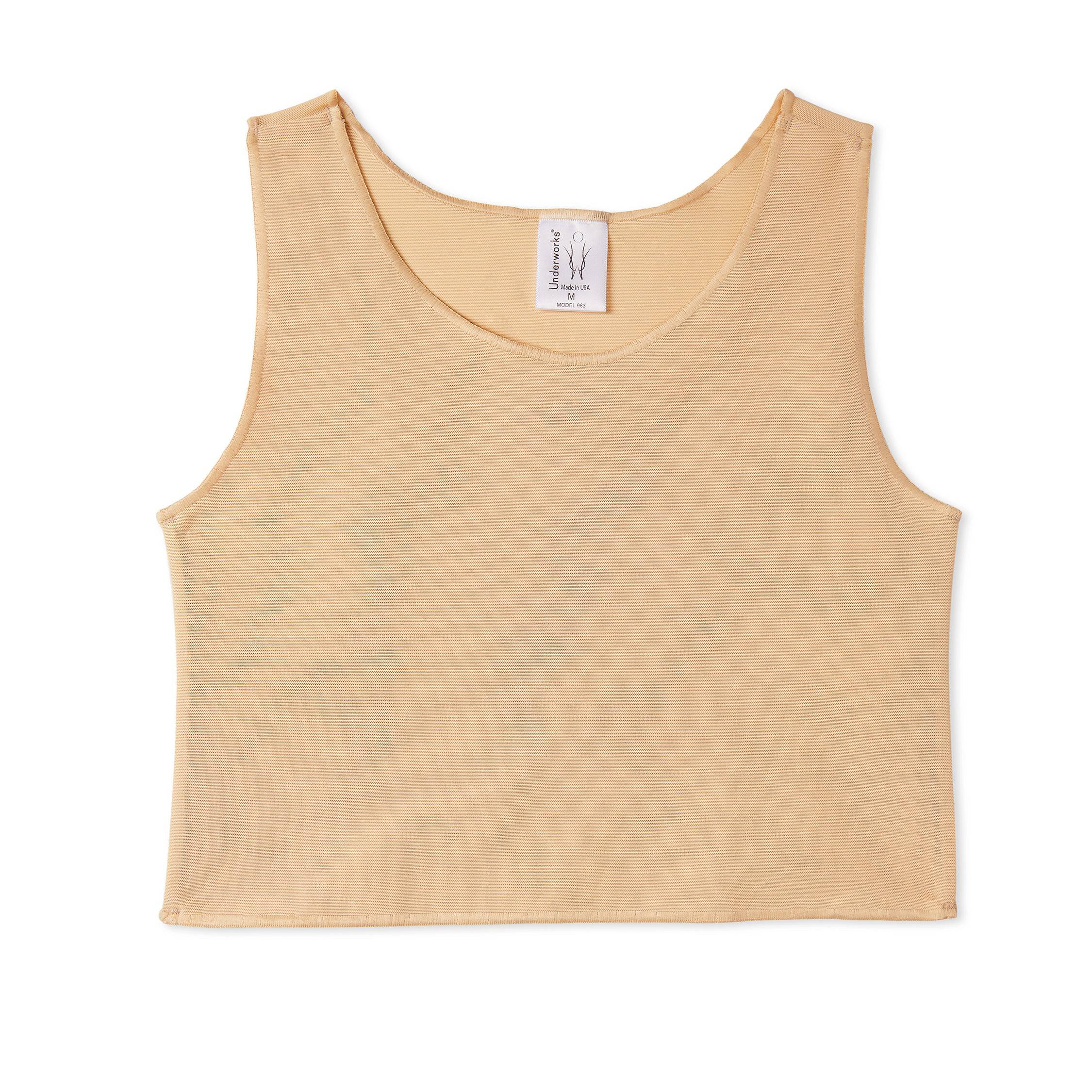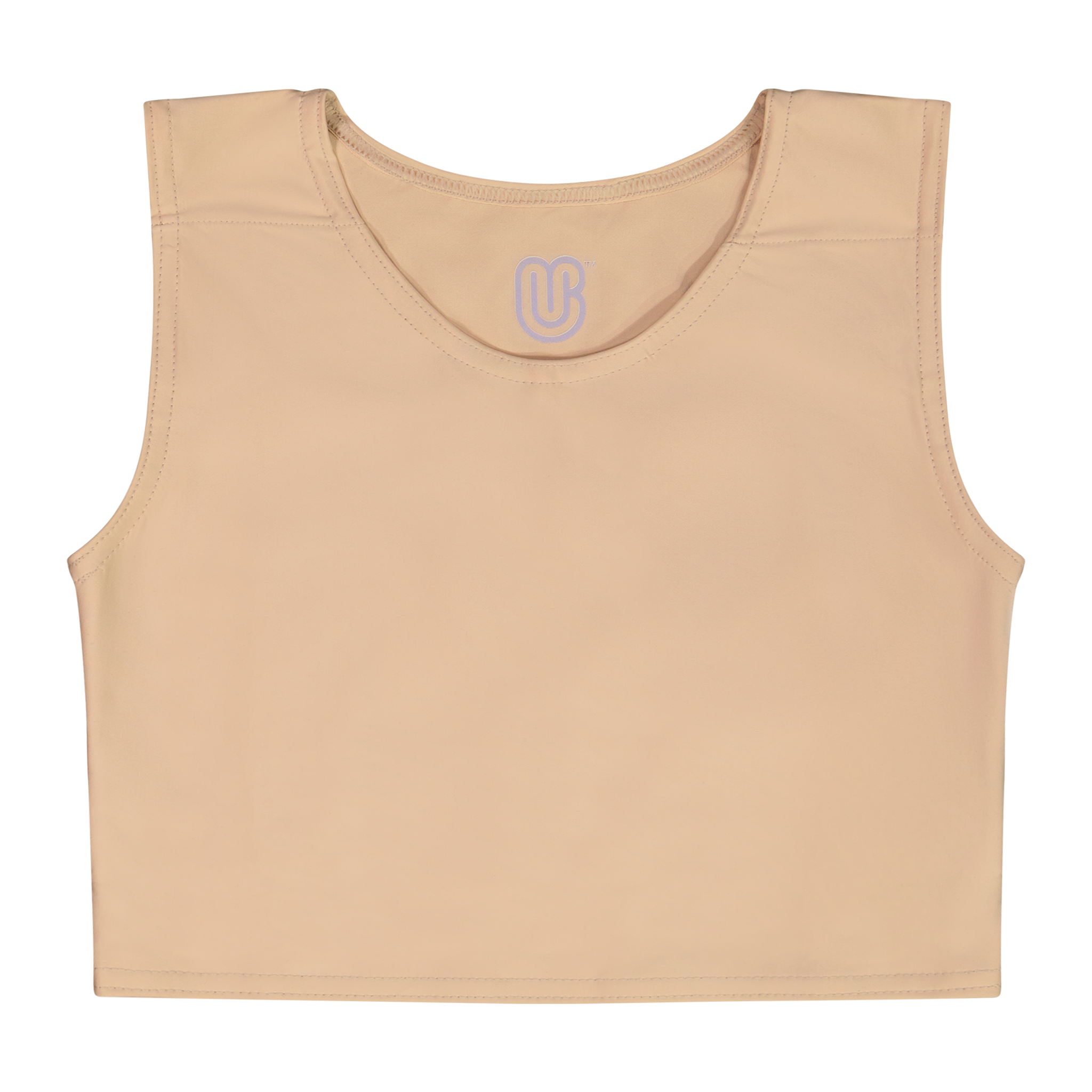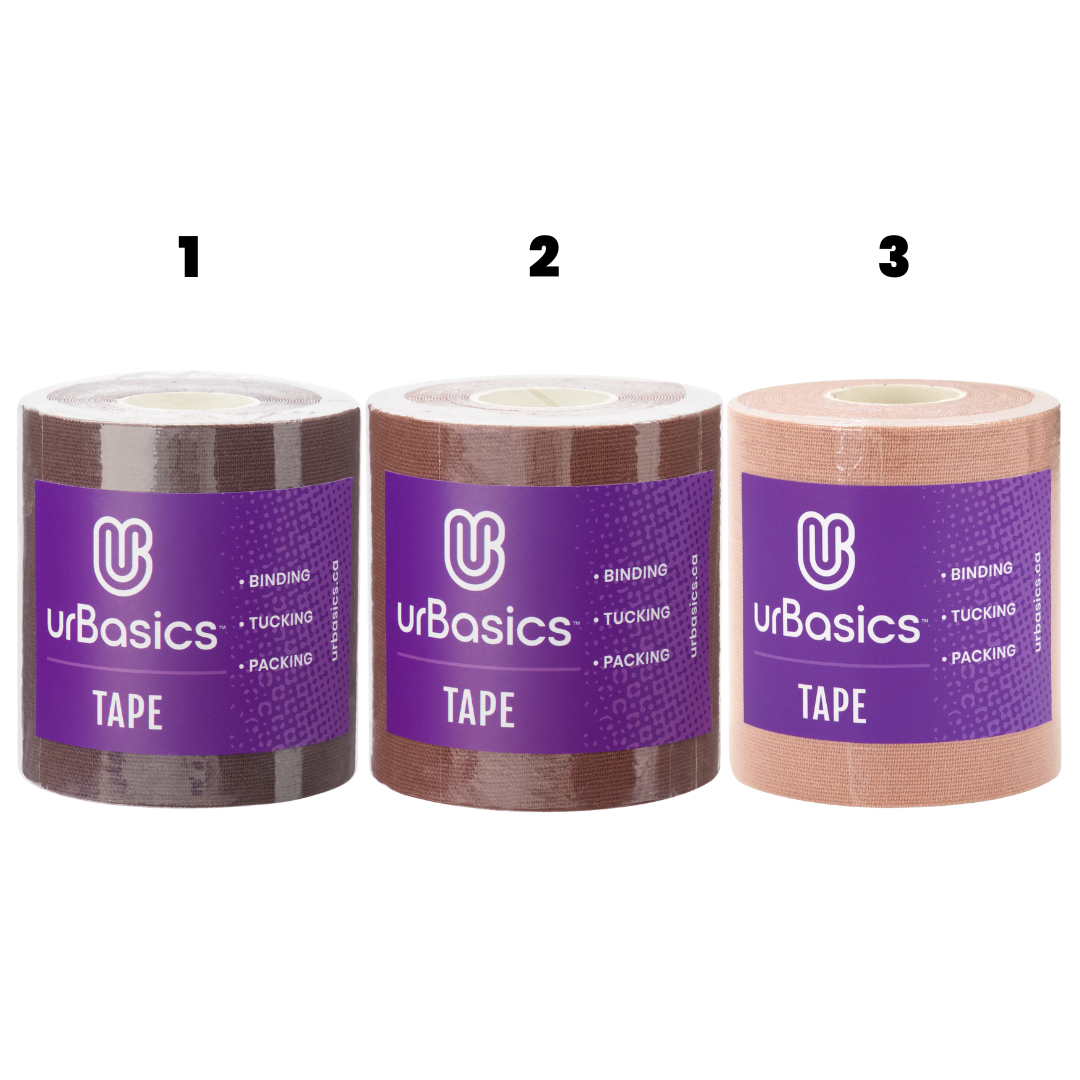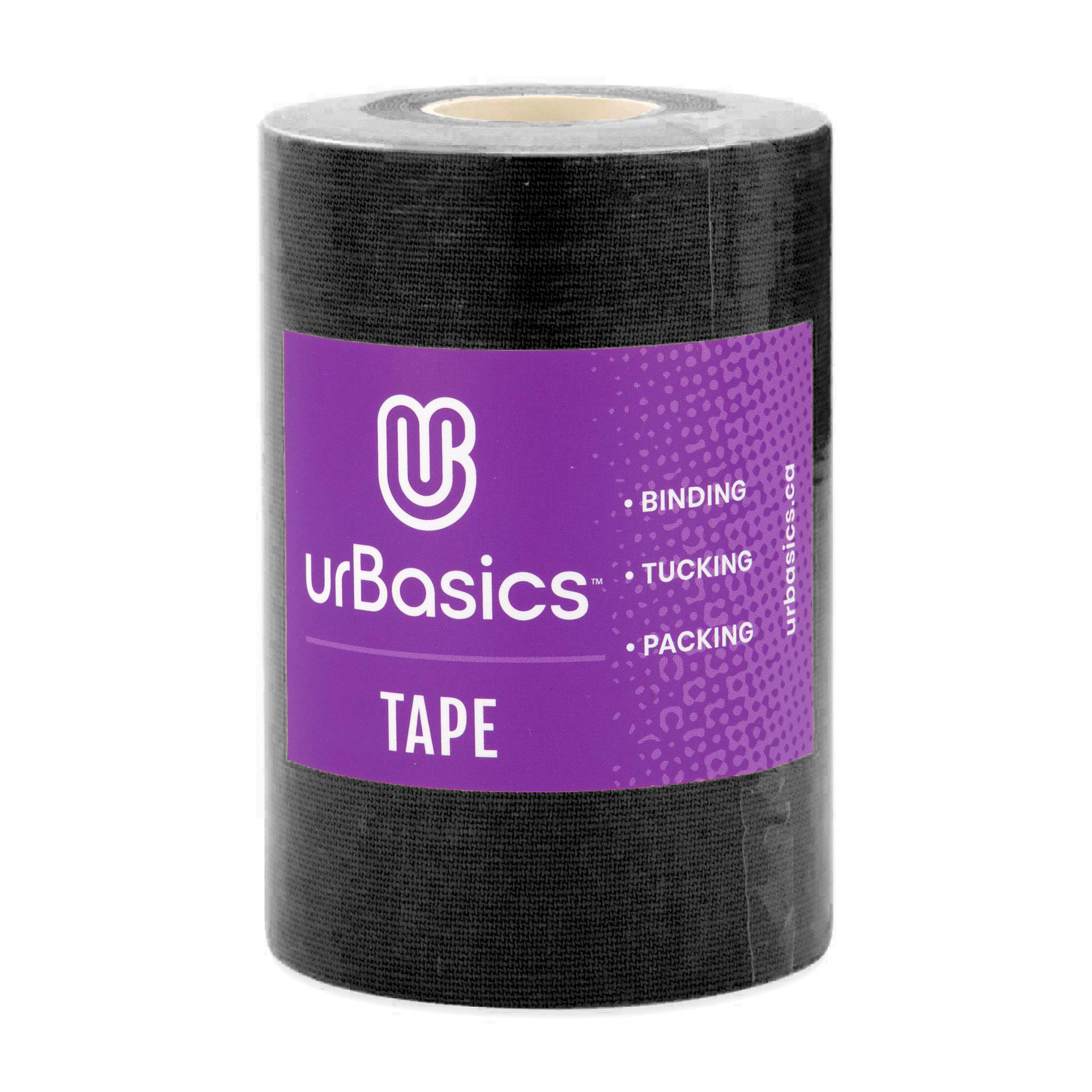All You Need to Know About:
Chest Binders
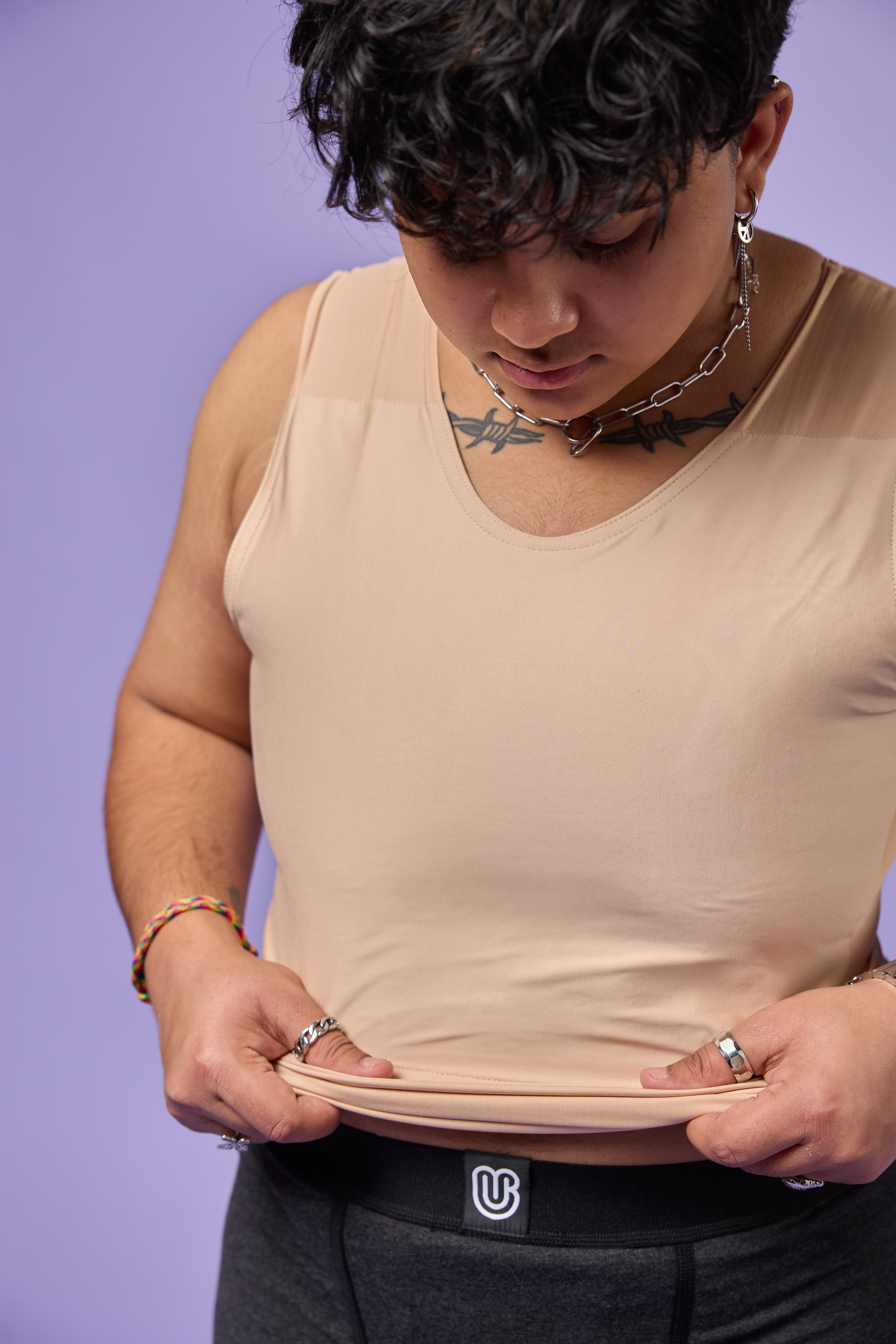
A complete guide to FTM chest binders
Using a chest binder is a great way for trans folks and other non-gender conforming individuals to ease their anxiety and gender dysphoria. Unfortunately, finding reliable information on the subject can be challenging.
This comprehensive guide explores everything you’ll want to know about getting a binder for yourself. We’ll cover the basics of what it is and how to wear it, as well as questions about safety, fit, and buying the right size
Keep reading to get all the information you need to embark on your transformative journey!
What is chest binding?
Chest binding is the process of compressing your upper body to create the appearance of a flat chest. It can also refer to the garment used in the compression process. Generally speaking, a chest binder is worn under everyday clothes, although they can also be used by themselves without any additional clothing.
Individuals may bind for various reasons. Some trans people use chest bindings as part of their recovery after top surgery, while others may use binders to ease their gender dysphoria day-to-day.
However, individuals of all gender identities – in and outside the binary – participate in binding practices. For example, a cisgender woman may find binders more comfortable than a sports bra. A non-binary person might also feel more at ease with the appearance of a flatter pectoral area.
What is a binder?
A chest binder is an article of clothing used to press one’s chest tissue or breasts down, helping you achieve a flatter look. Some types might have shoulder straps and resemble a full tank top. Others, like half binders, only provide compression down until your midriff.
There are also compression products designed for specific purposes. For example, some post-op transgender people need a chest binder to help them with recovery. These binders are specially designed to make sure trans men have ample support while healing their chest area without hindering their breathing.
Using a binder can help trans and gender non-conforming individuals with dysphoria and general anxiety. They can also increase overall feelings of confidence and self-esteem.
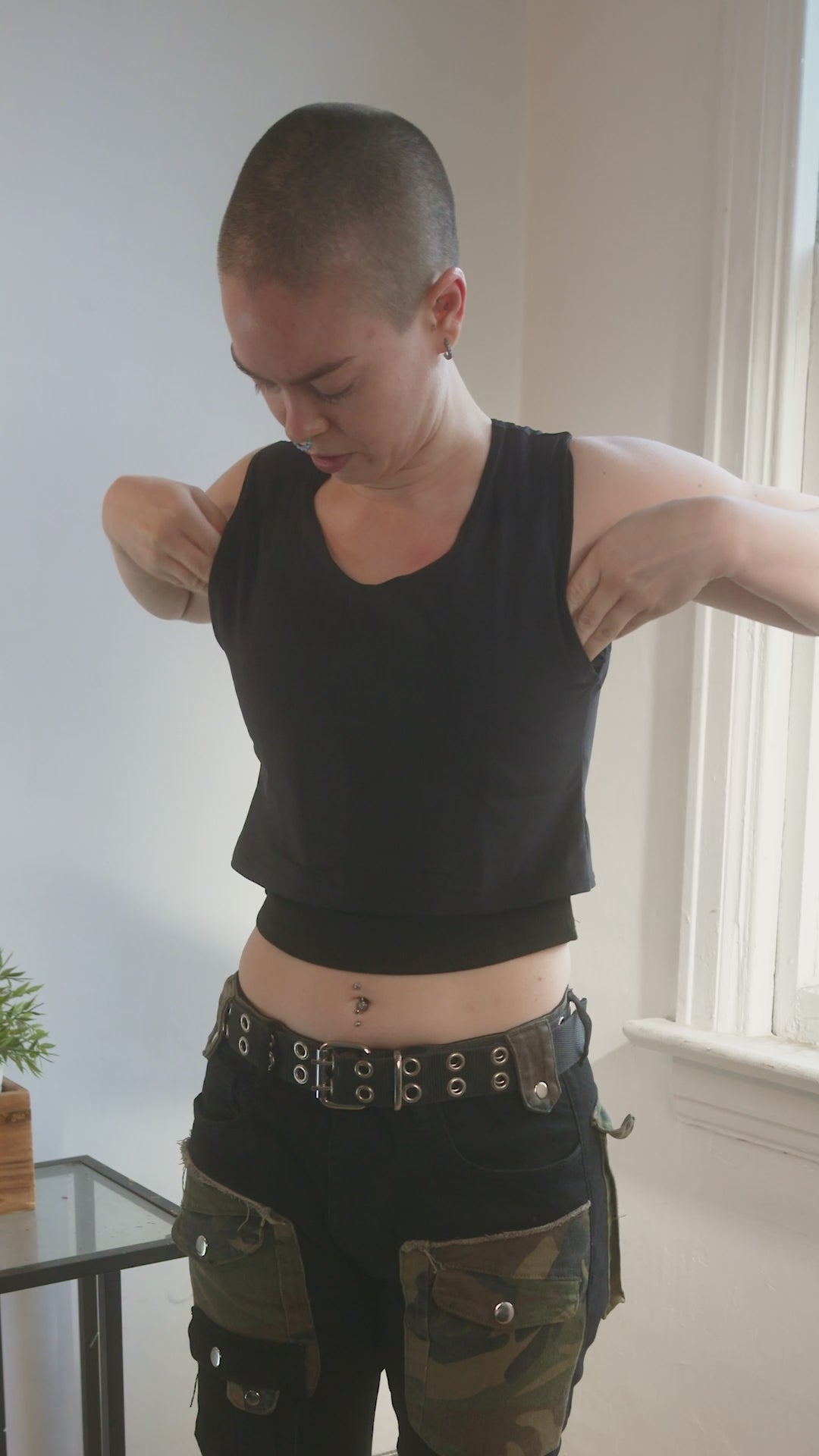
How do I wear a Chest Binder?
There isn’t one perfect way to wear your chest binder – what matters is that it feels good for you. If there’s any pain or significant discomfort, then adjustments may be necessary.
How you wear your binder may change as you grow more accustomed to it. Veterans of the practice of chest binding may pull their binders on like any other tank top.
Putting chest binders on is only the first step. Proper binding practice is essential to your comfort, self-esteem, physical health, and mental health. Therefore, first-time users have to note a few things when incorporating binders into their day-to-day lives.
Layering binders or wearing your chest binding with extremely tight clothing can be excessively restrictive. You should also exercise caution in wearing your binding for more than 12 hours or to sleep. The only exception is when your healthcare provider recommends a binder after surgery – always follow their recommendations.
Care and Cleaning
Binders are usually made from a mixed-material design that requires care and regular maintenance. We recommend hand washing your binder or putting it in a gentle cold-water cycle in your washing machine, and hanging to air-dry.
Hot water can loosen your garment’s material over time, decreasing its overall lifespan. You can also accidentally shrink an overly-stretched binder by putting it in your dryer. Just make sure to keep an eye on your item and take dryer heat into account. Also, make sure to never bleach your binder because it impacts the material’s elasticity.
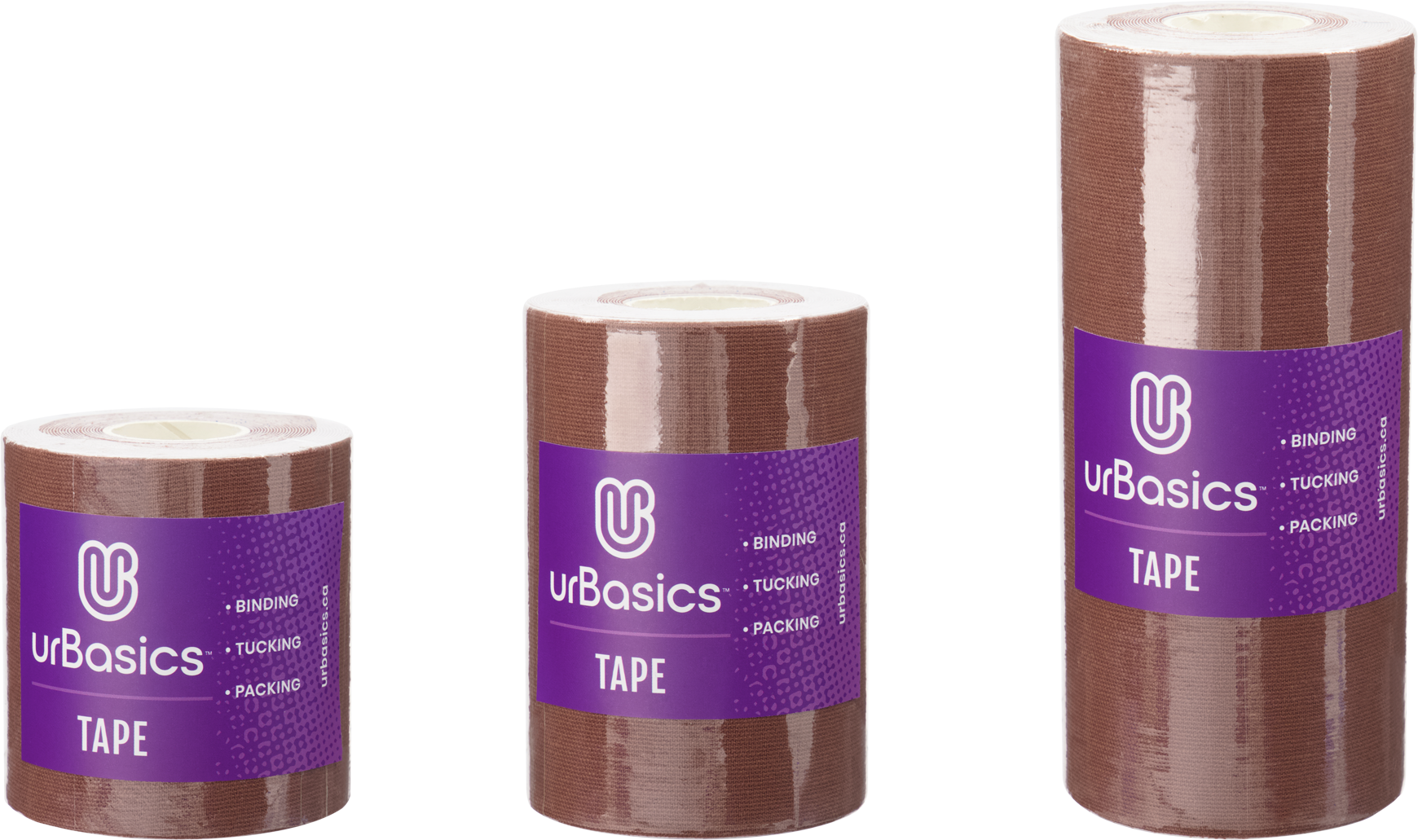
What about Binding Tape?
If you’ve done any research about binding your pectoral area, you may have read that you should never use duct tape for binding. However, if binders, sports bras or compression shirts are uncomfortable, there is a special kind of binding tape you can use instead.
Compression tapes, often made of hypoallergenic materials, are among the most common binder alternatives because of their much lower price. They can ease dysphoria without the restrictive compression or high cost of a chest binder. In addition, since the tape doesn’t go around the back, it’s a safer and more comfortable choice to wear when working out.
To learn more about proper application & removal of binding tape, check out the following videos!
Tape Application
Make sure your chest is clean and dry before starting the application. It’s ok to stretch the tape in the middle but make sure the ends aren’t pulling - tension might cause blisters!
If your chest is on the smaller side, check out our other tutorial with Jess.
Tape Removal
Patience is key! Hold down the skin next to the section of tape you're removing and move slowly. We recommend soaking it in oil for 10 min before starting. Remember to moisturize well and give the skin at least 1 day of rest before the next application.
If your chest is on the smaller side, check out our other tutorial with Jess.
How do I choose a Chest Binder?
The right binder is essential and transformative. A binder can do away with a feminine silhouette – and the anxiousness attached to it – by giving people a flatter look.
However, navigating the different types of binders, their price, and their varying sizes can be overwhelming. This section discusses the most common questions about the process. At the end of this, you should have everything you need to determine which compression garment suits your needs and find the right size.
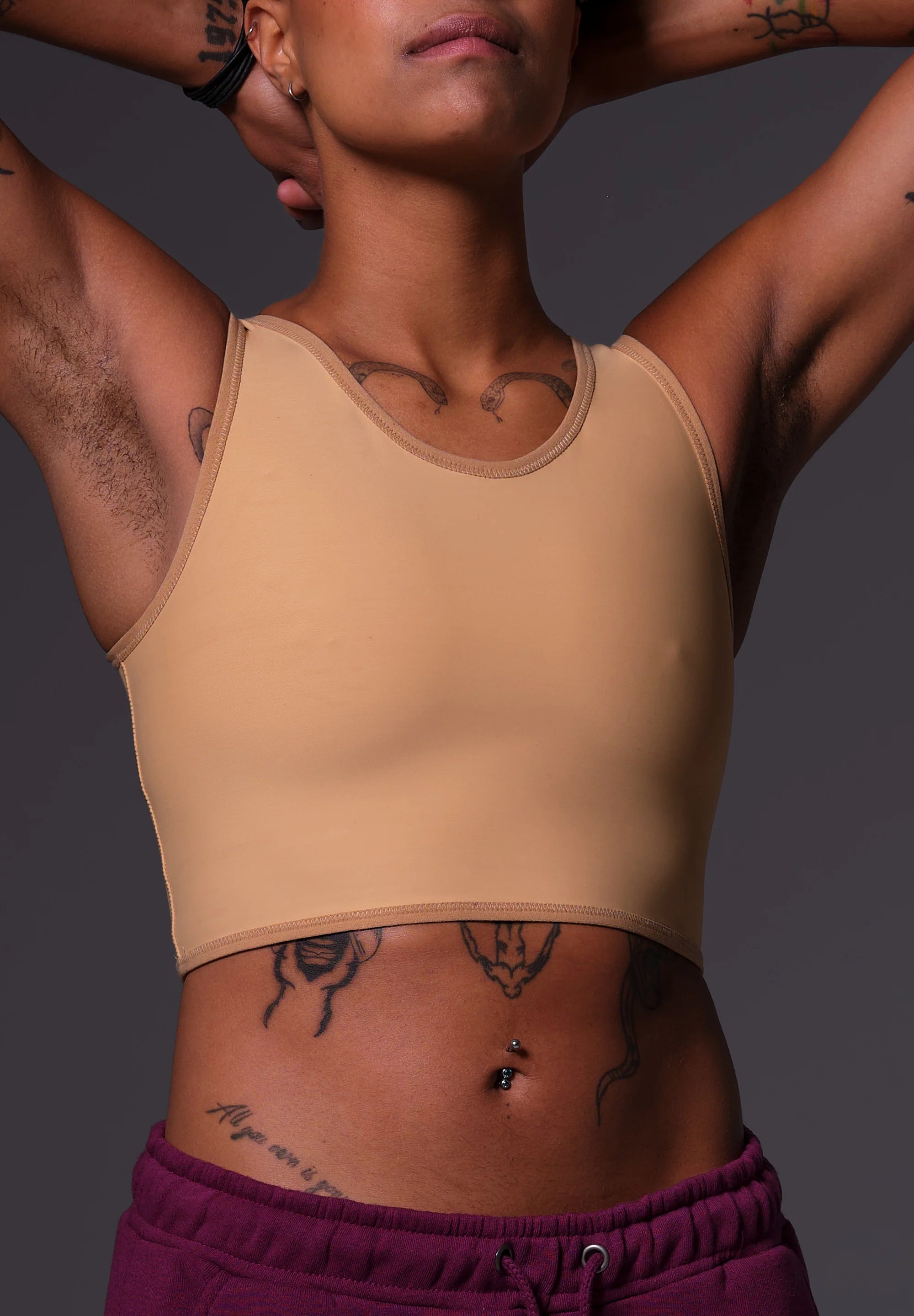
Types of Binders
There are two common binder types:
- A short-length binder provides compression from your chest to your midriff. This type of binder would be an excellent choice for people that mainly feel dysphoric about their chest.
- A full-length binder stretches over your stomach and hips. Unlike short-length binders, a full-length binder also compress your stomach and hips if you seek an overall more masculine silhouette.
Some types of garments are specifically constructed for people coming out of top surgery, like this Post-Surgical Wrap Binder. This type of binder is usually tighter than everyday use counterparts. They also often have zippers, allowing users to get in and out of them painlessly.
UNTAG, formerly known as Danaë Trans-Missie, from Amsterdam designed an innovative Gym Binder which is shorter than the regular short-length binder, extra low cut back to prevent excessive perspiration and great for sports and athletes. These binders are handmade and available in youth and adult sizes.
BINDING BASICS
What about sizing and cost?
Sizing
First-time buyers tend to buy the smallest possible binder size to get more compression, but this can lead to adverse health outcomes in the long run. Just like other clothing items, the best way to get the best-fitting binder size is to measure yourself and cross-reference the manufacturer's size guide.
With that in mind, a new binder usually feels a little snug when you first wear it. However, there are a few indicators that you might want to size up. If you feel significant physical discomfort (scratchiness, material digging into your skin) or if you’re having difficulty breathing while wearing your binder.
The best-fitting binder is also the most comfortable one. If you experience any of the above issues, you may need a larger size.
Need more help? Click here for a walkthrough video!
Cost
Binder accessibility is an issue for many people because of cost. That being said, there are alternative methods of getting the compression you need without paying too much out-of-pocket.
Many organizations in Canada, provide trans and non-binary folks with free binders and other gender-affirming gear. If a binder just does not fit into your budget right now, we recommend checking with organisations in your city or province! For Canadians, there's Skipping Stone or Out Saskatoon and Point of Pride in the United States.
Tips for Healthy Binding
Is binding safe? Binding is essential for many people, but it isn’t without risks. This section goes into detail about a few critical concerns related to binding. We’ll go through the potential side effects and what you can do to have a healthy binding experience.
Potential Health Problems and Side Effects
Using a binder over long periods of time can affect your movement and breathing. It can also affect your skin and muscles without proper care. The act of compressing one’s chest can create a warm, moist environment that can allow fungal or bacterial infections to develop over time.
In addition, using a binder that’s too tight can lead to serious physical complications including:
- Skin and tissue problems: tenderness, scarring, swelling, itching, and infections.
- Body pain: chest, shoulder, back, or abdominal pain.
- Respiratory issues: difficulty breathing while wearing a binder.
- Musculoskeletal problems: postural changes, weakened muscles or rib fractures.
The key to healthy binding lies in finding the right one for you and listening to your body.
Safety for Larger Chest Sizes
With the right care and maintenance, binding is generally safe. However, people with larger chests may want to take extra precautions when using their binder. We recommend doing the following things when getting used to life with your binder:
- Experiment with putting it on: Some individuals may find that stepping into your binder is much easier than pulling it over your head. Regardless of which method works for you, we recommend experimenting with how you position your tissue. Some folks swear on pushing down-and-out, while others suggest pushing up-and-out instead.
- Don’t wear more than one binder: Larger-chested people may be tempted to wear more than one binder to get the flattest possible outcome, but doing this runs the risk of damaging your health.
- Give your body time to rest: Wearing compression clothing all day can be taxing on your body, especially if you’re particularly chesty. We recommend taking a break every 6-8 hours while using a binder, plus taking a day or two off every week if you can manage it.
Final Reminders
Safety is key when using a binder. Plus, prioritizing your comfort and health is essential to achieving the best possible binding experience! Here are some of our handy tips for first-time buyers and binding veterans that want a refresher:
Take breaks from using a binder: Like we mentioned earlier, using a binder while sleeping, exercising, or for more than 12 hours isn’t a great idea. Take regular breaks and give yourself room to breathe every now and then!
Sizing is key: Buying a binder that's too tight can significantly increase the risk of medical issues so we recommend always measuring yourself and looking at a couple of different options.
Bind less before top surgery: Long-term binding can impact your skin’s elasticity, which can cause complications for folks looking to get top surgery.
Be mindful of what you use: Using household products like duct tape, bandages, and plastic wrap can intensify negative symptoms associated with binding. If getting a binder is difficult or prohibitively expensive, we recommend using sports bras, compression Tape, or neoprene gear instead.

